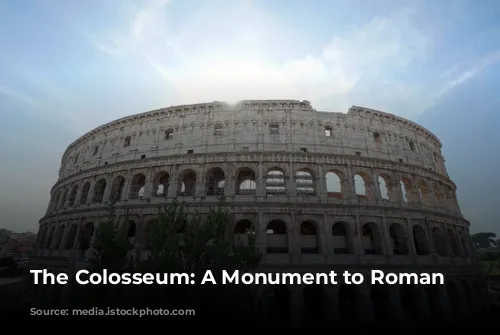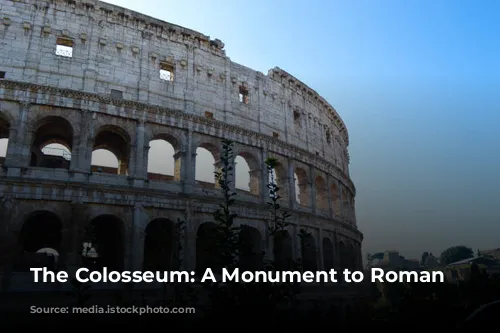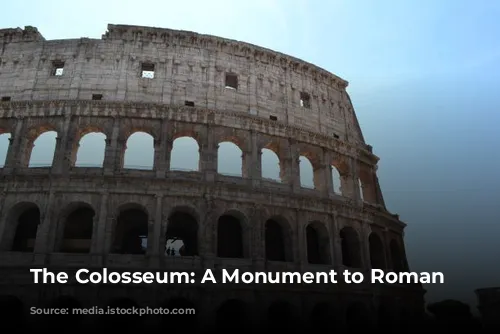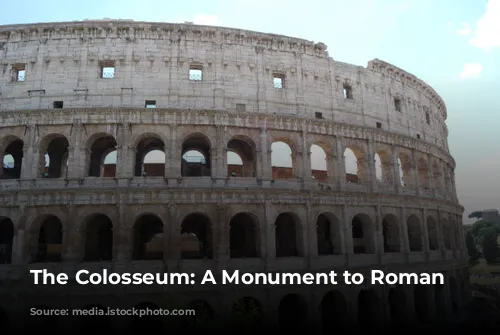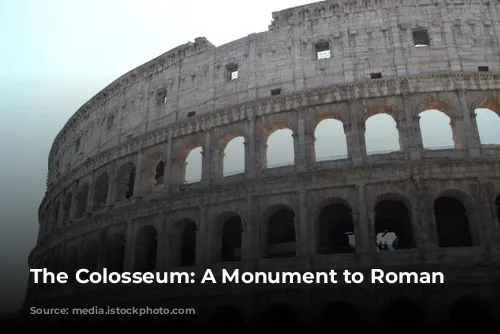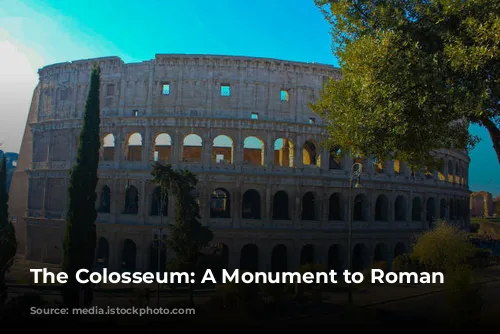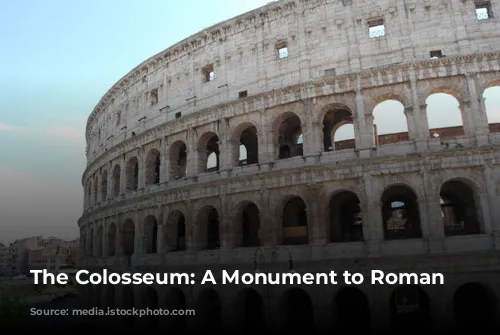Welcome to the Colosseum, a legendary amphitheater that echoes with the spirit of ancient Rome! This majestic structure, towering over the cityscape, is more than just a ruin; it’s a testament to the engineering brilliance and entertainment prowess of the Roman Empire.
The Colosseum’s Birth and Grand Opening
The Colosseum, originally known as the Flavian Amphitheatre, was the brainchild of Emperor Vespasian, a member of the Flavian dynasty. His son, Titus, inaugurated this architectural marvel in 80 AD. The opening ceremony was a spectacle of unparalleled grandeur, lasting an astounding one hundred days. The Colosseum became the stage for thrilling gladiatorial combats, exotic animal hunts, and even mock naval battles.
Imagine the sheer scale of the opening celebrations! The arena, filled with water, transformed into a vast battlefield, re-enacting epic naval clashes of the past.
The Name: A Legacy of Prophecies and Power
But why does the world know it as the Colosseum? The name’s origin can be traced back to a prophetic statement by the Venerable Bede, a medieval monk: “Rome will exist as long as the Colosseum does; when the Colosseum falls so will Rome; when Rome falls so will the world.”
This prophecy, fueled by the monument’s imposing presence, helped solidify the Colosseum’s iconic status. The name may also have been inspired by the colossal statue of Emperor Nero, which once stood near the amphitheatre.
A Marvel of Roman Engineering
The Colosseum stands as a testament to Roman architectural prowess. Its structure, a symphony of arches and tiers, speaks volumes of the Romans’ mastery of construction. Imagine the Colosseum in its pristine glory, its white travertine stone glistening under the sun. Its elliptical shape allowed for a vast audience, ensuring that everyone had a clear view of the action below.
The Colosseum was a marvel of its time, taking less than a decade to construct. How did the Romans achieve this feat? Their secret lay in their understanding of the arch. This architectural element allowed them to distribute the weight of heavy structures efficiently, as seen in their impressive aqueducts. The Colosseum, essentially a series of aqueducts stacked atop each other, is a testament to their ingenuity.
A Witness to Time’s Passage
Today, we see only the skeleton of what was once the world’s greatest arena. The passage of time has left its mark, with three-fifths of the outer wall missing. Throughout the Middle Ages, the Colosseum was stripped of its precious materials, its marble, lead, and iron repurposed to build other structures. The holes visible on many columns are reminders of the Romans’ reliance on lead and iron for their marble blocks.
Despite the ravages of time, the Colosseum retains its power and mystique.
A Place for Spectacle and Social Hierarchy
The Colosseum, designed to hold up to 70,000 spectators, was more than just a venue for entertainment; it reflected the social hierarchy of Roman society. Entry was free for Roman citizens, but seating arrangements were determined by social status. The commoners were seated at the top, while the elite occupied the prime seats near the arena.
Just as in modern sports stadiums, the Colosseum had its own unique ways to protect spectators from the elements. The “Velarium,” a massive linen awning, was operated by 100 sailors from the Imperial fleet, who moved it in perfect synchrony to the beat of a drum.
The Arena: A Stage for Gladiatorial Glory and More
The arena itself, now bare, was once covered in a mixture of brick and wood. Below, in the cellars, lay the machinery that powered the Colosseum’s spectacular effects.
Imagine the thrill as animals and gladiators were hoisted into the arena through trapdoors, disappearing in a burst of dust. The Romans mastered the art of theatrical entrances, adding an element of surprise and drama to their shows.
The Colosseum’s events were more than just entertainment; they served to strengthen the bond between the people and their leader, providing a collective experience that distracted them from political turmoil.
The Show Must Go On: Venationes, Gladiators, and More
The Colosseum hosted a variety of shows, each with its own unique flavor. Morning sessions featured “Venationes,” thrilling combats between exotic animals and humans.
Imagine the roars of the crowd as fierce beasts were pitted against courageous gladiators!
Sometimes, these events morphed into public executions, with criminals left to the mercy of ferocious animals. The “Silvae,” with their elaborately constructed sets, offered a glimpse into a world of simulated forests teeming with animals, a less brutal form of spectacle.
Gladiatorial Combat: A Symbol of Courage and Skill
The event that captivated the audience was undoubtedly the gladiatorial combats.
Imagine the deafening roar as gladiators emerged from the underground passage, their shields gleaming under the sunlight!
These warriors, often prisoners of war or men seeking fame and fortune, were revered by the crowd, similar to modern sports heroes.
But behind the grandeur, the gladiatorial combats were a brutal spectacle. The defeated gladiator could plead for mercy, and the emperor, seated on his stage, had the power of life or death. A thumbs-up ensured survival, while a thumbs-down meant certain death.
A Legacy of Blood and Symbolism
Roman audiences reveled in these spectacles, a taste for violence that we might find disturbing today. The smell of blood and burnt flesh mingled with the scent of exotic animals, a reminder of the raw nature of these events.
Over time, the Colosseum’s role shifted. It became a shelter for the needy, housing confraternities, hospitals, and even a cemetery. By the Middle Ages, it had become a symbol of Rome’s glorious past.
Today, the Colosseum stands as a testament to the grandeur of the Roman Empire. Its weathered stones whisper tales of gladiatorial battles, roaring crowds, and the echoes of an era long past.
Visiting the Colosseum is an encounter with the ghost of old Rome, a journey through time, and a testament to the enduring power of human creation.
